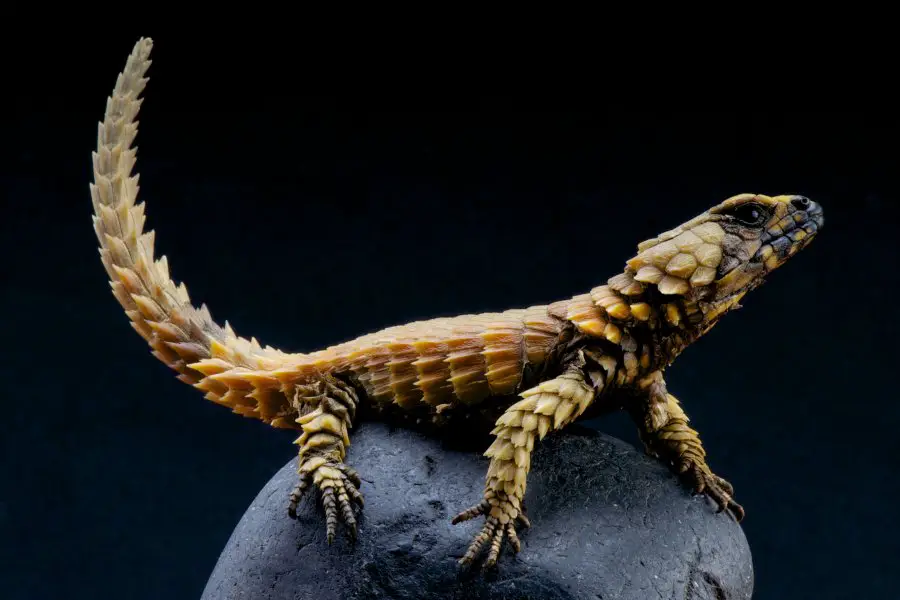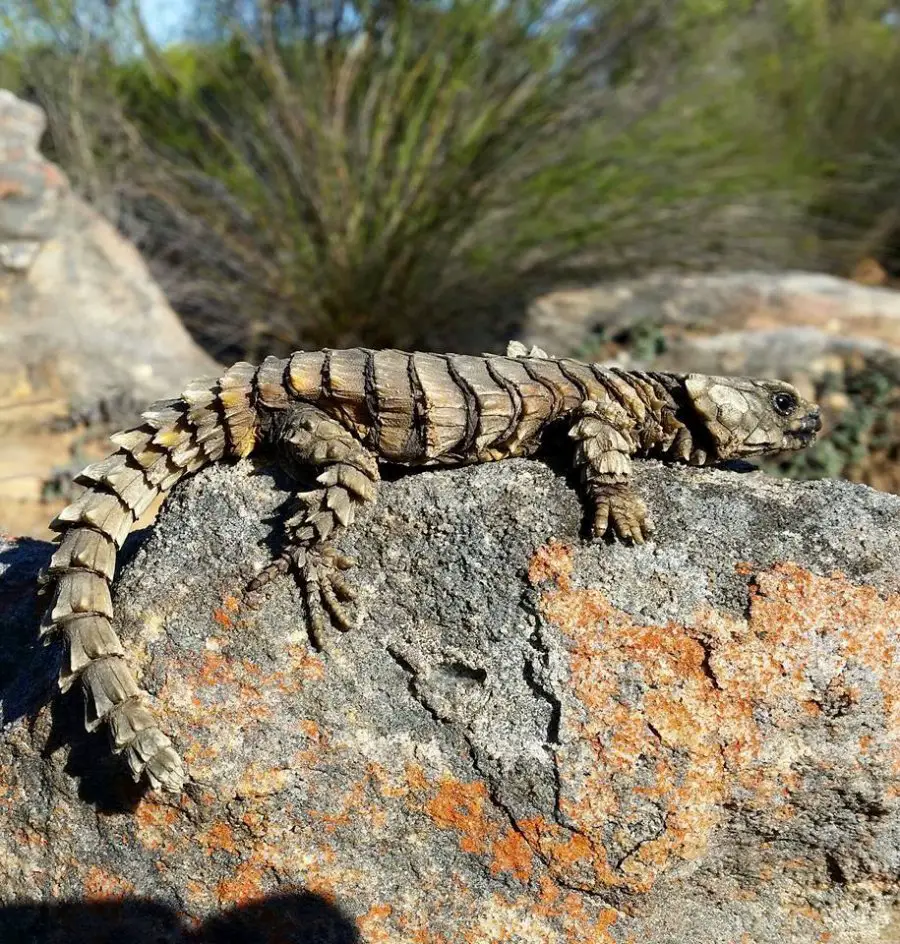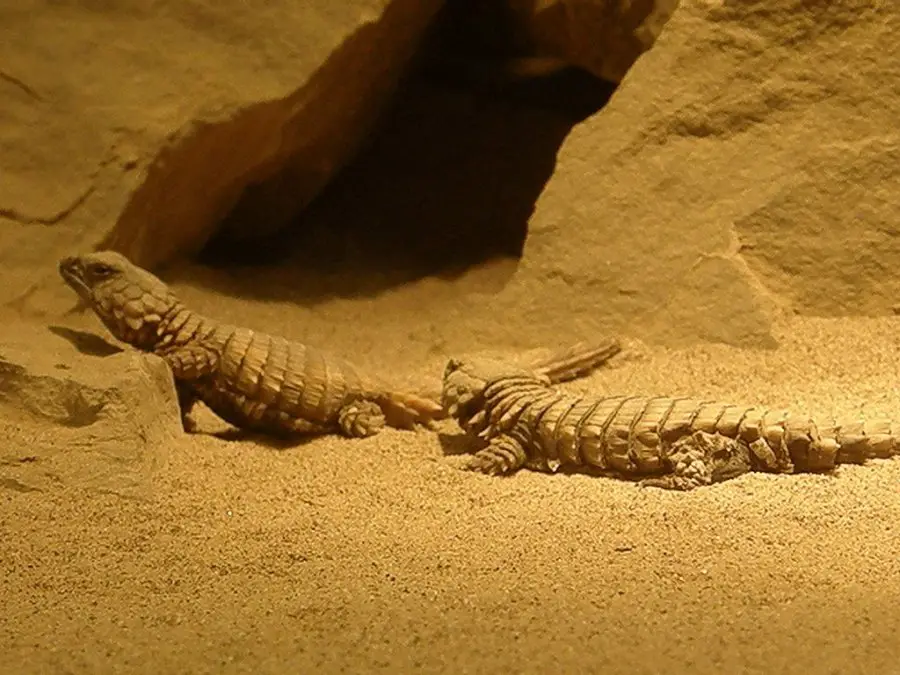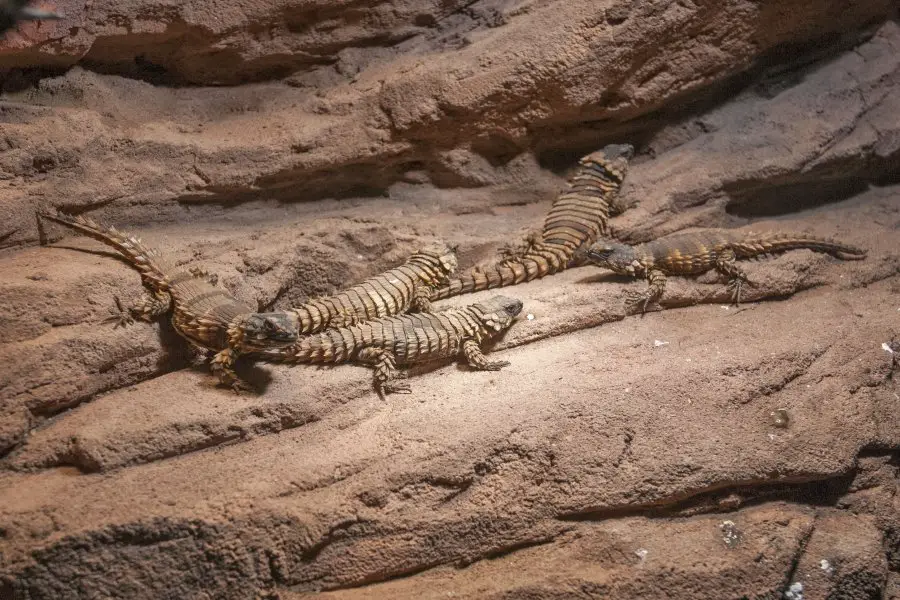The Mini Dragon Like Armadillo Lizard Is One Of The Most Unique Creatures On Earth
Tags: opinion

The very quality which sets this magnificent creature apart is also the reason why it is struggling to survive. The armadillo lizard, also known as the ouroborus cataphractus scientifically, is a reptile, that might seem to be from our imaginations, but is present in real life.

The armadillo girdled lizard is quite possibly the most adorable reptiles which we have come across. It is quite remarkable how these creatures have evolved to counter the harsh climate it lives in and also defend itself from its predators. However, it is not just the inbuilt armor that this reptile possesses but also quite a few other characteristics which make it stand out from the rest.
Unlike a lot of reptiles that prefer to live in solitude, armadillo lizards are social reptiles that cohabitate with a large number of other lizards of the same species. The habitat of this species of lizards is in the rock fissures which can be found in the deserts in Southern Africa. The crevices keep them safe from the harsh heat of the continent as well as other predators. It is also fascinating that they are the rarer group of reptilian species that don’t reproduce by hatching from eggs.
Unlike the armadillo, which is enormous when compared to this lizard, these lizards are very small and hence an easy catch. They do not require a lot of food which also makes them very lucrative pets – which in turn has caused their numbers to rapidly decline owing to illegal trafficking.
The Gentle Dragon
The habitat of these lizards is situated in the region of Succulent Karoo, a mountainous rocky part of South Africa. The lizards are also known as the golden armadillo lizard. One might think that these lizards could be dangerous or even poisonous, but they usually run away when other creatures approach them and are also not very agile.
Armadillo lizards can come in various colors, but range between brown and yellow. They can be light brown with a hue of yellow or even just brown. As obvious as it is now, the distinguishing feature is their spiky spines which they are covered in from the head to the tail. The part of the body that is not covered by these spines is their underside.
It is due to their bellies and underside having soft tissue that they curl up into a ball when they feel threatened. The lizards bite the end of their tail to stay in this position and can stay like that for about an hour. This distinctive defense mechanism keeps their populace safe from mongoose, big birds, snakes, and other predators. Notably not humans, as one may have realized.
The lizards have the potential to grow up to four inches longitudinally for both the sexes. Their life span is usually around ten years.
A Termite Diet
The principal source of nutrition for these reptiles are termites – which also happens to be the primary food source for armadillos. The diet also includes invertebrates as well as other small insects. It is also quite noteworthy that their feeding areas can be pretty far from their dwelling areas, as far as 60 feet away. Quite a large distance for a 4-inch lizard.
It is due to the predominance of termites in their diets that make this species rather vulnerable. Since environmental changes affecting termite population will affect them as well since it is their food source.
Armadillo Lizard: A Champion Lover

The males of this species are generally territorial, much like most other species, including humans. But it is during the onset of the mating season that this territorialism is heightened as the males desire to keep other males away from their females. Which is also remarkably the same as most humans.
It is due to the fact that these reptiles give birth and not hatch through eggs. They can reproduce up to one or sometimes two offspring during a year. The fact that the incubation period is from 6 to 8 months certainly does not make things easy. Another trait in these reptiles is the fact that they feed the offspring, which is very unusual among reptiles.
As discussed earlier, another feature which sets these reptiles apart is how they live. They live in communal groups which can be up to 60 of them at one time. It is, in fact, extremely unusual to spot an armadillo lizard out on its own. Unless it’s sick or lost after a termite hunt.
They do not exactly live in families, associating with each other. But just as a common species as a whole. The females, the male as well as the young lizards can move from one space to another as per their liking.
Research conducted upon these reptiles and the main source of their nutrition, i.e. termites, have revealed that large populations of these lizards lessen their termite intake so as to reduce rivalry for sustenance between each other.
Battling The Unethical Trade of These Magnificent Creatures
The armadillo lizard appears as if it is a dangerous reptile which can cause harm. But contrary to how they look, they are not dangerous at all. The fact that they move slowly and live in giant numbers make them very easy and lucrative to catch for evil people.
It would perhaps serve this creature justice if it was called dangerous and toxic, which would at least help curb human involvement in their habitats.
Over 5000 people have downloaded our free ebook “Growth Hacking Tips And Rituals For Optimal Living” CLICK HERE to get your free copy now
Fortunately enough, ever since the International Union for Conservation of Nature declared them vulnerable, the lizard population has seen a decent amount of growth. It has also led to their status being pushed down a level to a Least Concern.

But despite the conservation efforts as well as the illegalization of their trade, there have been several scenarios where people have tried to capture and sell them. As per IOL, a Capetown publication, traffickers were caught possessing almost 50 of these lizards and were sentenced to 13 years behind bars or 1 million SA Rand, which is about $70,000 USD. The police took the help of CapeNature Conservation Service, to crack down on the traders.
The enforcement of the law has been consistent but it requires more power. After all, it is the only way to preserve and protect the biodiversity on our planet.
Image Credit: Matthijs KUIJPERS & Handré Basson & Frank Wouters & Kristyna Bazantova
Leave Comment: